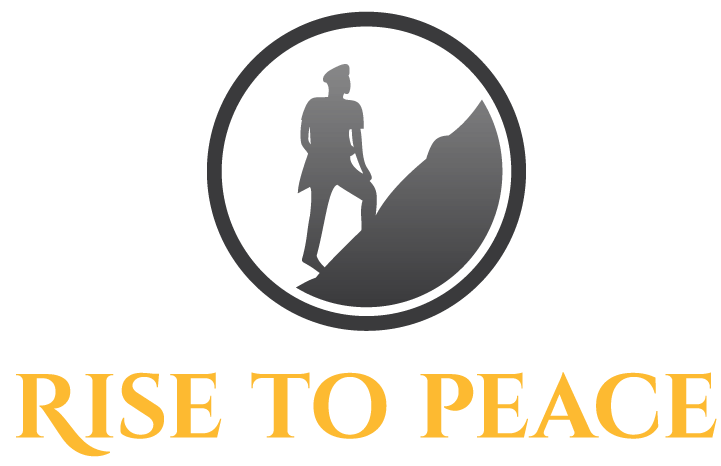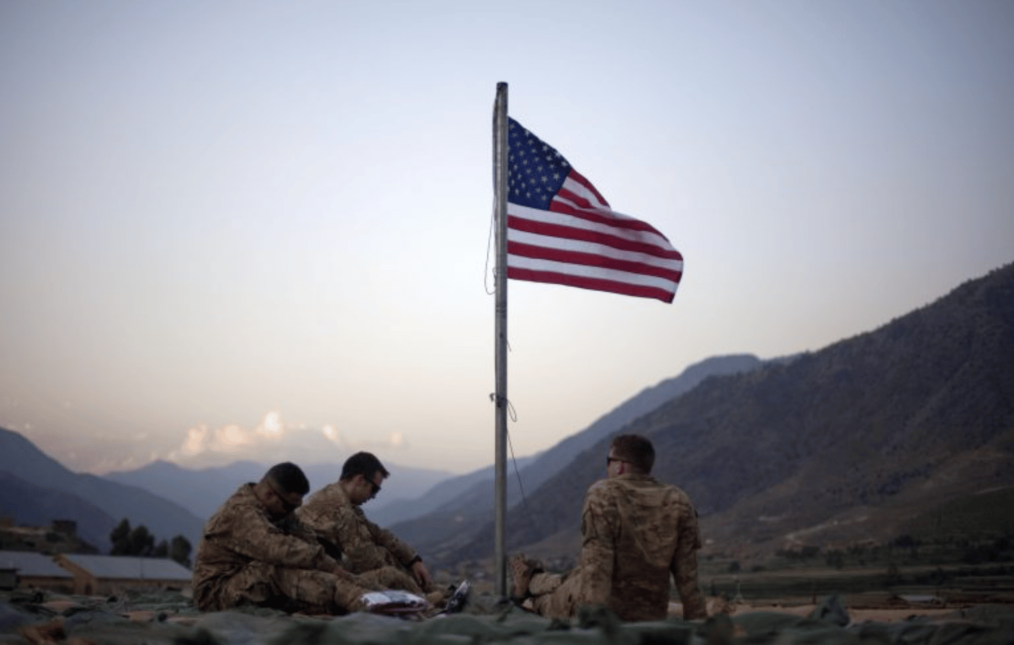“We are sinking”: A Speech from the Sea
Tuvalu’s foreign minister Simon Kofe addressed the 26th United Nations Climate Change Conference (COP26) knee-deep in the sea to remind the world about climate emergencies and make world leaders realize the plight of residents of sinking island states. Although rising sea levels and climate change triggered by global warming are global threats, they may have minimal and reversible effects on some states. In contrast, other states may be disproportionately affected by climate change’s devastating impact, thereby making them early victims of climate change. For instance, the Small Island Developing States (SIDS)[1], a designation given by the United Nations to a group of 38 UN member states and 20 non-UN member states facing comparable sustainable development challenges, are on the verge of sinking due to the warming of the ocean and melting of land ice. The situation is alarming as it places them on the frontline of climate change and the survival of their statehood and population is at stake. The residents of sinking island states are exposed to unique social, economic, and environmental vulnerabilities. It is essential to brief on the vulnerabilities caused by climate change to formulate a theoretical framework to establish the link between climate change and violent extremism.
Climate Change Vulnerability
Climate change detrimentally affects a region’s ecosystem and directly disturbs the social and economic lives of people. First, unpredictable changes in weather conditions disrupt the agricultural cycle. Second, such regions are prone to natural calamities. Third, residents’ livelihood, especially those relying on fisheries, agriculture, and livelihood, is severely affected, thereby widening economic inequality. Fourth, food scarcity and poverty rates will uncontrollably spike, leading to intergenerational malnourishment and inequality. Fifth, climate change induces forced migration and displacement. Sixth, climate change disproportionately affects women as caregivers making them vulnerable to natural calamities such as floods and drought. Also, data indicate that eighty percent of the victims of forced displacement due to climate change are women[2]. Seventh, climate anxiety weakens the resilience capacities of people, and it erodes their faith in government, thereby causing political instability. Eighth, a study by the Harvard Kennedy School indicated that rising temperature and criminal behavior are intrinsically related, and the former positively influences the latter[3]. Ninth, climate skepticism, misinformation, lack of climate literacy, and awareness cause delusion; Consequently, delays public participation in combating climate change. Tenth, climate change disrupts the effective implementation of sustainable development goals. The list is not exhaustive, and the author believes that the unknown vulnerabilities of climate change outnumber the known ones.
The Nexus Explained in Light of the ‘Black Hole Theory’
The nexus between violent extremism and climate change is becoming more apparent. An area severely affected by climate change breeds vulnerabilities, making it fertile ground for radicalization and violent extremism to flourish. The problem evolves into a vicious cycle, with climate change breeding violent extremism and vice versa. Theoretically, this nexus can be explained in light of the black hole theory. Previously this theory was applied to explain the nexus between organized crime and terrorism. In the context of climate change, ‘black hole’ refers to the points of convergence between violent extremism and climate change vulnerabilities. It means areas severely affected by climate change become ‘black holes’ for violent extremism to breed.
The United Nations Development Programme’s report on the rise of violent extremism in the ‘lake chad basin’ in the Central African region portrays the nexus between violent extremism and climate crisis[4]. Similarly, a severe drought followed by food insecurity in Yemen allowed AQAP, Al-Qaeda’s Yemeni branch, to capitalize on rising poverty to recruit members[5].
Eco-Terrorism Fueled by Climate Crisis
Eco-terrorism or eco-extremism, an extreme version of the radical environmentalism movement, stems from the non-conformist view of ecocentrism. According to this, it is anthropogenic activities that are responsible for environmental degradation. Hence the disaffected members believe that it is imperative to stop humankind by any means from damaging the environment. The Federal Bureau of Investigation defines eco-terrorism as “the use or threatened use of violence of a criminal nature against innocent victims or property by an environmentally oriented, subnational group of environmental-political reasons, or aimed at an audience beyond the target, often of a symbolic nature.[6]”
The tactics used for eco-terrorism may range from tree spiking to arson and monkeywrenching. For instance, in 1989, John P. Blount, a member of an environmental extremist group called Earth First, was convicted for tree spiking in Idaho’s Clearwater National Forest. According to the FBI, tree spiking is an act of terrorism aimed at sabotaging expensive logging equipment and severely harming the workmen[7]. In another instance, the FBI reported on an arson case that was aimed at spreading terror in the ‘seattle luxury houses.’ The suspects left a protest sign titled “Built green? Nope black!” at the crime scene[8]. The tactics used by the disaffected members of eco-terrorism make them different from other eco-centric communities.
Radicalization to Eco-Terrorism
Climate change-affected areas are fragile to numerous vulnerabilities, and extremist groups capitalize on these vulnerabilities to radicalize the population. Such groups induce violent extremist views in individuals by using the following tactics:
- You are bearing someone else’s burden: Disinformation about climate change is the tool used to spread eco-terrorism. The object is to create hatred against individuals and entities involved in large infrastructural projects. The recruits are misled to believe that the climate change-related disadvantages they face are due to projects that take a toll on the natural environment.
- Concern for future generation: Fear and insecurity about the future is induced in the minds of individuals. They are misinformed that if they fail to act, the survival of their future generations will be at stake, and their entire race will be forever wiped off from the face of Earth.
- Fear of forced displacement: The victims of climate change are made to believe that they will be deprived of shelter, livelihood, and quality of life. Further, forced displacement would split the population, and eventually, they will be in a situation of statelessness.
- Earth destroyers are set free: The victims of climate change are made aware of the weak criminal law regime against ecocide. They are disinformed that the environmental offenders are left unpunished, and hence they have to punish those who escape the law. The Seattle arsenal attack is an example of this.
- Take arms for Earth: This stage is the last phase of radicalization and the beginning of eco-terrorism. It induces a sense of negative responsibility on individuals and makes them believe that failure to prevent environmental degradation would make them equally culpable as the offender.
Conclusion
Former British Prime Minister Boris Johnson expressed his concern that climate change could fuel extremism and form a potential threat to global security[9]. This global threat requires a global response, with international organizations, governments (at all levels), the private sector, and other think tanks working cooperatively and collaboratively to combat this version of violent extremism. Hence, the international and national legal regime on climate change must be strengthened. It must include effective implementation of sustainable development goals that will stall climate-induced vulnerabilities and combat violent extremism from taking root. In addition, specific climate action needs to be strengthened, such as enforcing penal law on ecocide, promoting climate literacy and resilience-building programs, ensuring active participation of women and youth in combating climate change and setting up deradicalization institutes.
[1] United Nations Office of the High Representative for the Least Developed Countries, Landlocked Developing
Countries and Small Island Developing States, “About Small Island Developing State”, available at, https://www.un.org/ohrlls/content/about-small-island-developing-states, last accessed on July 23, 2022.
[2] United Nations Development Programme. (2015). Resource guide on gender and climate change. available at https://www.undp.org/sites/g/files/zskgke326/files/publications/Resource.pdf, last accessed on October 04, 2022
[3] Harvard Kennedy School. (2012). Crime Weather and Climate Change. available at https://www.hks.harvard.edu/sites/default/files/centers/mrcbg/files/ranson_2012-8.FINAL.pdf, last accessed on October 03, 2022
[4] United Nations Geneva. (2021). Lake Chad Basin: “Fighting Terrorism, ‘decisive test’ on biggest challenges of our time. available at https://www.ungeneva.org/en/news-media/news/2021/11/lake-chad-basin-fighting-terrorism-decisive-test-biggest-challenges-our, last accessed on October 04, 2022.
[5] Arab Centre for Research and Policy Studies. (2012). “Yemen and Al-Qaida”. available at, https://www.dohainstitute.org/en/PoliticalStudies/Pages/Yemen_and_al-Qaeda.aspx last accessed on October 24, 2022.
[6] Federal Bureau of Investigation. (2002). Eco-terrorism. available at https://archives.fbi.gov/archives/news/testimony/the-threat-of-eco terrorism#:~:text=The%20FBI%20defines%20eco-terrorism%20as%20the%20use%20or,beyond%20the%20target%2C%20often%20of%20a%20symbolic%20nature., last accessed on October 01, 2022.
[7] ibid
[8] Federal Bureau of Investigation. (2008). The Seattle Eco-terrorism investigation. available at https://archives.fbi.gov/archives/news/stories/2008/march/seattlearson_030408.html, last accessed on October 02, 2022.
[9] Reuters. (2021). Johnson says climate change could fuel extremism. available at https://www.youtube.com/watch?v=i77BoB-tINw, last accessed on October 03, 2022.
Varun VM, Counter-Terrorism Research Fellow.





